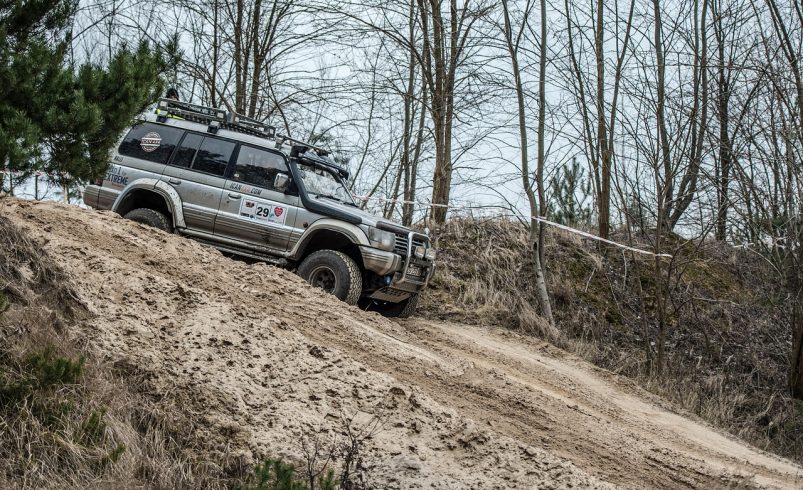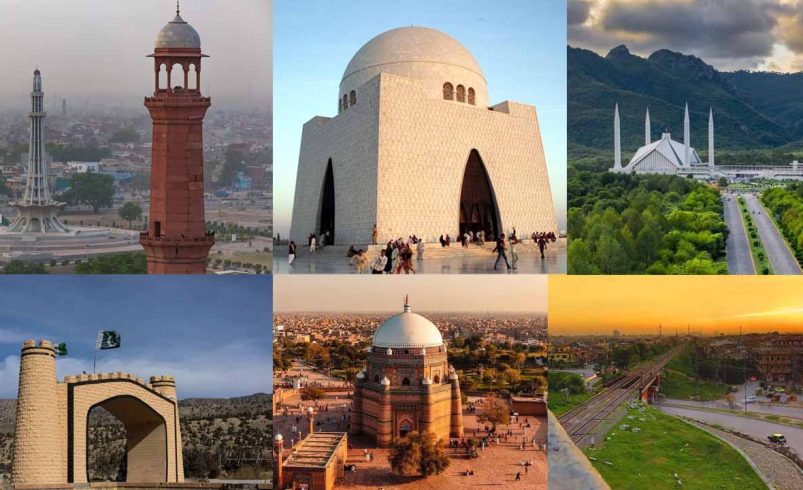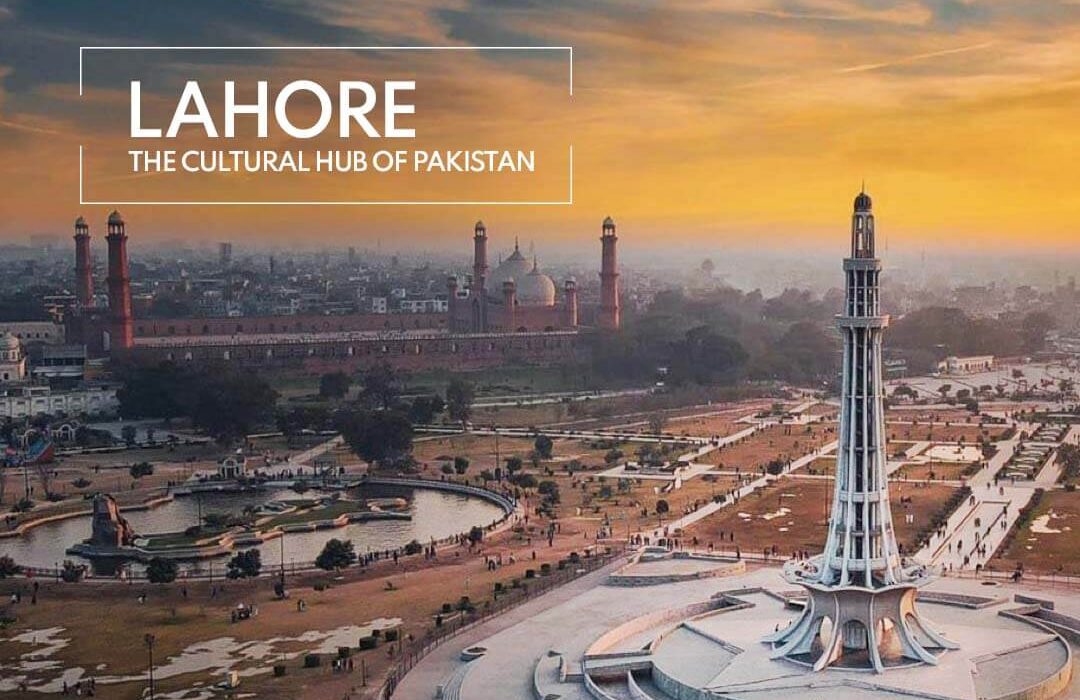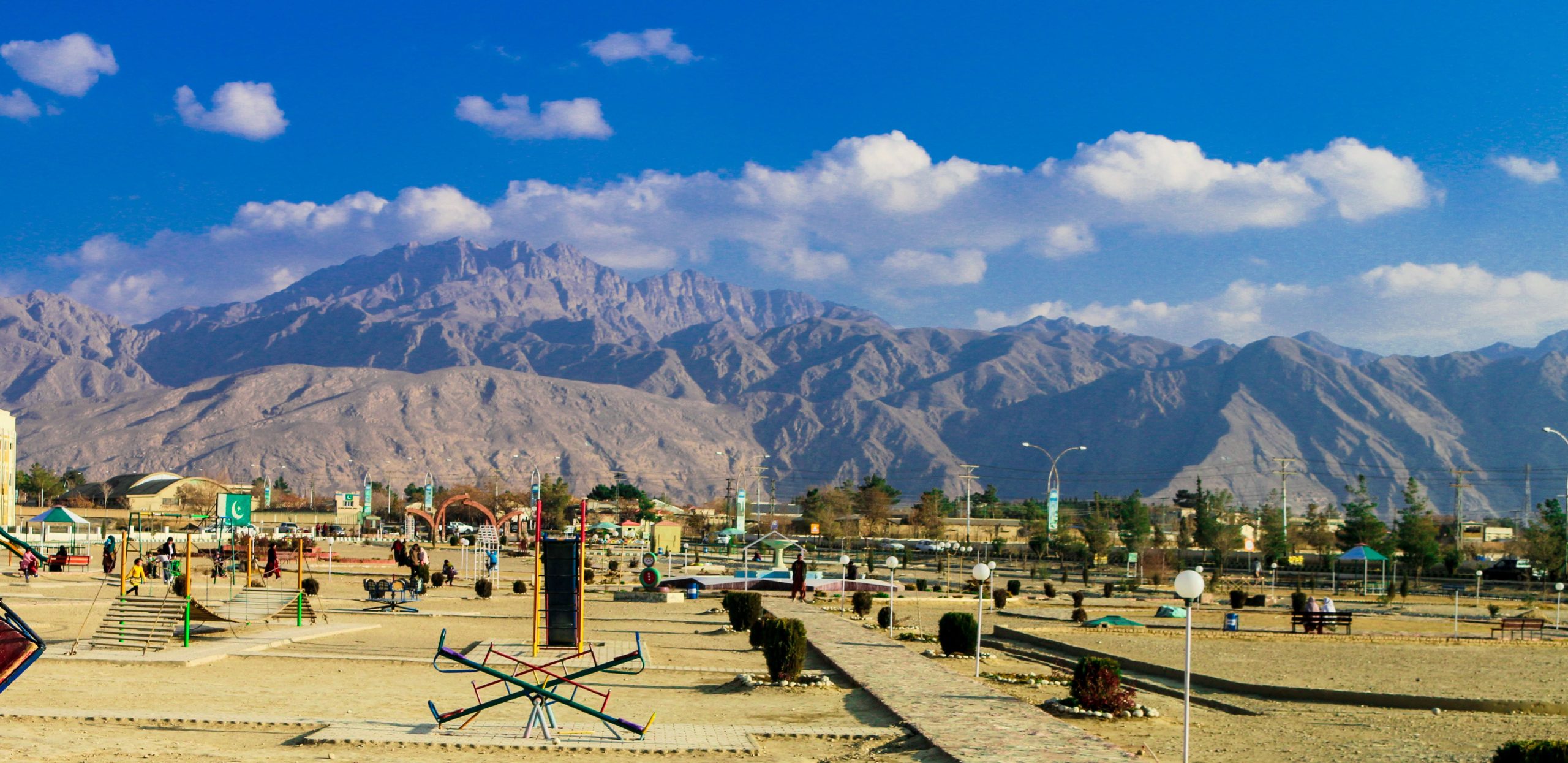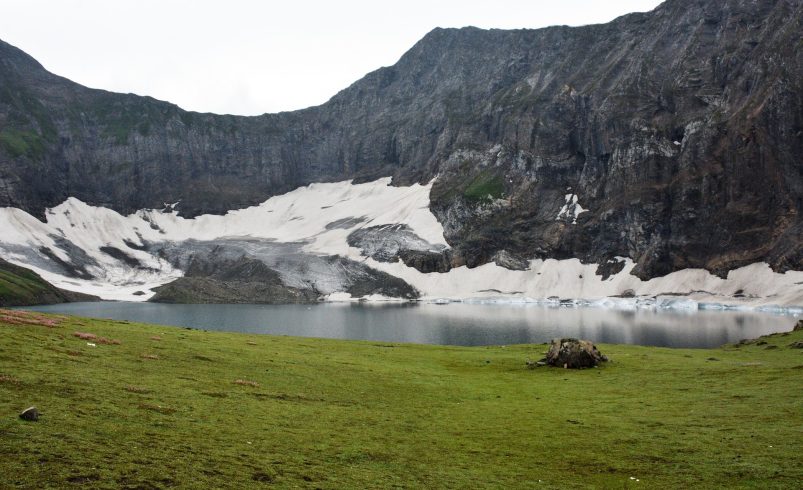
- March 25, 2025
Introduction
Pakistan is home to some of the most stunning alpine and freshwater lakes in the world. These breathtaking lakes are spread across the Himalayas, Karakoram, and Hindu Kush mountain ranges, offering surreal landscapes, adventure opportunities, and cultural significance. From the turquoise waters of Attabad Lake to the crystal-clear Rush Lake, each lake holds a unique charm. This guide explores the most beautiful lakes in Pakistan, covering their location, access routes, best time to visit, activities, nearby attractions, and cultural importance.
1. Attabad Lake
Attabad Lake is one of the most beautiful lakes in Pakistan, known for its striking turquoise waters. Formed in 2010 after a massive landslide, it has become a major tourist attraction.
- Location: Gilgit-Baltistan, Hunza Valley, near Karimabad
- How to reach: Take a flight to Gilgit, then drive 120 km from Gilgit to Hunza via the Karakoram Highway
- Nearby Places: Passu Cones (20 km, famous for unique rock formations), Hunza Valley (30 km, historical sites & orchards)
- Best Time to Visit: May to October
- Activities to Do: Boating, jet skiing, fishing, sightseeing
- Cultural Significance: Formed after a massive landslide in 2010, now a popular tourist attraction
2. Sheosar Lake
Sheosar Lake is a serene alpine lake located in the heart of Deosai National Park, offering breathtaking views of lush meadows and snow-capped peaks.
- Location: Deosai National Park, Gilgit-Baltistan, near Skardu
- How to reach: Drive from Skardu (45 km) through Deosai Plains
- Nearby Places: Deosai Plains (5 km, wildlife & meadows), Sadpara Lake (20 km, scenic beauty)
- Best Time to Visit: June to September
- Activities to Do: Trekking, wildlife photography, camping
- Cultural Significance: Located in the “Land of Giants,” sacred for local communities
3. Rush Lake
One of the highest alpine lakes in the world, Rush Lake sits at 4,694 meters above sea level, offering stunning panoramic views of Spantik, Miar Peak, and Ultar Sar.
- Location: Nagar Valley, Gilgit-Baltistan
- How to reach: Trekking from Hopper Valley, 15-20 km trek
- Nearby Places: Hopper Glacier (10 km, trekking hub), Nagar Valley (20 km, scenic beauty)
- Best Time to Visit: June to September
- Activities to Do: Trekking, camping, photography
- Cultural Significance: A hidden gem in Pakistan’s trekking world, Rush Lake is a popular destination for adventure seekers.
4. Satpara Lake
A natural glacial lake supplying Skardu’s water, Satpara Lake is known for its turquoise waters and surrounding rugged mountains.
- Location: Skardu, Gilgit-Baltistan
- How to reach: 9 km drive from Skardu city
- Nearby Places: Shangrila Resort (15 km, scenic beauty), Deosai National Park (40 km, wildlife)
- Best Time to Visit: May to October
- Activities to Do: Boating, fishing, sightseeing
- Cultural Significance: Plays a key role in Skardu’s water supply and has spiritual significance among locals.
5. Lower Kachura Lake (Shangrila Lake)
Famous for the Shangrila Resort, this picturesque lake offers luxury accommodations and stunning reflections of the Karakoram mountains.
- Location: Skardu, Gilgit-Baltistan
- How to reach: 20-minute drive from Skardu
- Nearby Places: Upper Kachura Lake (5 km, hiking trails), Satpara Lake (15 km, water activities)
- Best Time to Visit: April to October
- Activities to Do: Boating, sightseeing, luxury stay
- Cultural Significance: Part of the famous Shangrila Resort, a major tourist attraction.
6. Upper Kachura Lake
Unlike its commercialized counterpart, Upper Kachura Lake remains untouched and offers raw natural beauty with deep blue waters.
- Location: Skardu, Gilgit-Baltistan
- How to reach: Trek from Lower Kachura Lake (5 km)
- Nearby Places: Lower Kachura Lake (5 km, Shangrila Resort), Skardu City (20 km, cultural sites)
- Best Time to Visit: May to October
- Activities to Do: Hiking, photography, camping
- Cultural Significance: A lesser-known gem in Skardu, loved by offbeat travelers.
7. Saif-ul-Malook Lake
Known as Pakistan’s most famous lake, Saif-ul-Malook is a fairytale-like lake associated with local folklore and legends.
- Location: Naran, Kaghan Valley
- How to reach: Jeep ride from Naran (9 km)
- Nearby Places: Malika Parbat (5 km, Pakistan’s tallest peak in Kaghan), Ansoo Lake (10 km, trekking required)
- Best Time to Visit: June to September
- Activities to Do: Boating, camping, photography
- Cultural Significance: Features in Sufi poetry, said to be home to fairies.
8. Dudipatsar Lake
Also called the “Queen of Lakes”, Dudipatsar Lake is known for its emerald-green waters and snow-capped peaks.
- Location: Lulusar-Dudipatsar National Park, Kaghan Valley
- How to reach: 18 km trek from Besal
- Nearby Places: Lulusar Lake (20 km, another stunning lake), Jalkhad (15 km, base camp)
- Best Time to Visit: July to September
- Activities to Do: Trekking, camping, wildlife spotting
- Cultural Significance: Located in a protected national park, home to the Himalayan Ibex.
9. Lulusar Lake
A sparkling blue lake that is also the main source of the Kunhar River.
- Location: Kaghan Valley, Khyber Pakhtunkhwa
- How to reach: By road from Naran (48 km)
- Nearby Places: Dudipatsar Lake (20 km, requires trekking), Babusar Top (30 km, highest point on the Naran-Babusar road)
- Best Time to Visit: May to October
- Activities to Do: Sightseeing, photography, camping
- Cultural Significance: Holds historical importance due to Mughal-era routes.
10. Mahodand Lake
A serene lake in Swat Valley, known for its lush green surroundings and trout fishing.
- Location: Usho Valley, Swat
- How to reach: 35 km jeep ride from Kalam
- Nearby Places: Kalam Valley (35 km, base town), Kundol Lake (10 km, requires trekking)
- Best Time to Visit: June to September
- Activities to Do: Fishing, boating, camping
- Cultural Significance: Famous for trout fishing and Pashto folklore.
11. Kundol Lake
A stunning alpine lake in Swat Valley, Kundol Lake is surrounded by lush meadows, pine forests, and towering peaks, making it a popular trekking destination.
- Location: Utror Valley, Swat, Khyber Pakhtunkhwa
- How to reach: Jeep ride from Kalam to Utror (25 km), then a 3-4 hour trek
- Nearby Places: Mahodand Lake (10 km, fishing spot), Utror Valley (5 km, trekking hub)
- Best Time to Visit: June to September
- Activities to Do: Trekking, camping, fishing
- Cultural Significance: Considered a sacred site by locals, with folktales of fairies and spirits associated with the lake.
12. Daral Lake
A hidden alpine gem in Swat Valley, Daral Lake offers crystal-clear waters and panoramic views of surrounding peaks.
- Location: Gabral Valley, Swat, Khyber Pakhtunkhwa
- How to reach: 5-hour trek from Lalko village
- Nearby Places: Lalko Valley (10 km, starting point of trek), Mankial Peak (15 km, stunning view)
- Best Time to Visit: July to September
- Activities to Do: Trekking, camping, photography
- Cultural Significance: A lesser-known trekking destination, ideal for nature lovers and adventurers.
13. Ratti Gali Lake
One of the most beautiful lakes in Pakistan, Ratti Gali Lake is a high-altitude glacial lake surrounded by vibrant meadows.
- Location: Neelum Valley, Azad Kashmir
- How to reach: Jeep ride from Dowarian (18 km), then a short trek
- Nearby Places: Dowarian (18 km, base town), Keran (25 km, Neelum River views)
- Best Time to Visit: July to September
- Activities to Do: Trekking, camping, photography
- Cultural Significance: Known as the “Jewel of Kashmir”, it attracts nature lovers and photographers.
14. Ansoo Lake
Ansoo Lake, shaped like a teardrop, is one of the most mesmerizing yet challenging trekking destinations in Pakistan.
- Location: Near Malika Parbat, Kaghan Valley
- How to reach: 7-hour trek from Saif-ul-Malook Lake
- Nearby Places: Saif-ul-Malook Lake (10 km, fairyland lake), Malika Parbat (5 km, highest peak in Kaghan)
- Best Time to Visit: June to September
- Activities to Do: Trekking, photography, nature exploration
- Cultural Significance: The lake’s teardrop shape is believed to symbolize a tragic love story in local folklore.
15. Shandur Lake
Located at the “Roof of the World”, Shandur Lake sits at 3,700 meters and is famous for the annual Shandur Polo Festival.
- Location: Shandur Pass, between Chitral and Gilgit-Baltistan
- How to reach: By road from Chitral (150 km) or Gilgit (200 km)
- Nearby Places: Shandur Polo Ground (2 km, world’s highest polo ground), Phander Valley (40 km, scenic valley)
- Best Time to Visit: July (Polo Festival)
- Activities to Do: Polo, camping, photography
- Cultural Significance: The Shandur Polo Festival, held annually, attracts teams from Chitral and Gilgit in a centuries-old tradition.
16. Karambar Lake
One of the highest biologically active lakes in the world, Karambar Lake is known for its deep blue waters and rich biodiversity.
- Location: Broghil Valley, Gilgit-Baltistan
- How to reach: 6-7 day trek from Mastuj (Chitral)
- Nearby Places: Broghil Valley (25 km, scenic meadows), Lashkargaz (30 km, nomadic settlements)
- Best Time to Visit: July to September
- Activities to Do: Trekking, wildlife spotting, camping
- Cultural Significance: Locals believe the lake has healing properties, and it is an important part of local folklore.
17. Banjosa Lake
Banjosa Lake is an artificial lake offering a peaceful retreat amid dense pine forests.
- Location: Rawalakot, Azad Kashmir
- How to reach: 19 km from Rawalakot city
- Nearby Places: Toli Peer (30 km, hilltop views), Rawalakot (19 km, base town)
- Best Time to Visit: April to October
- Activities to Do: Boating, sightseeing, picnicking
- Cultural Significance: A popular honeymoon and family destination, known for its serene ambiance.
18. Hanna Lake
A picturesque lake near Quetta, Hanna Lake is known for its golden waters, surrounding mountains, and boat rides.
- Location: Urak Valley, Balochistan
- How to reach: 14 km from Quetta city
- Nearby Places: Urak Valley (10 km, waterfalls), Ziarat (100 km, Quaid-e-Azam Residency)
- Best Time to Visit: March to October
- Activities to Do: Boating, horse riding, picnicking
- Cultural Significance: An iconic recreational spot since the British colonial era.
19. Spin Khwar Lake
A hidden gem in Swat, Spin Khwar Lake is a small yet stunning alpine lake known for its crystal-clear waters and remote location.
- Location: Utror Valley, Swat, Khyber Pakhtunkhwa
- How to reach: Trek from Kundol Lake (4-5 hours)
- Nearby Places: Kundol Lake (5 km, another trekking lake), Utror Valley (15 km, trekking base)
- Best Time to Visit: July to September
- Activities to Do: Trekking, camping, photography
- Cultural Significance: A lesser-known but highly rewarding trekking destination.
20. Pyala Lake
A bowl-shaped lake located on the way to Lulusar Lake, Pyala Lake is a unique natural wonder.
- Location: Kaghan Valley, Khyber Pakhtunkhwa
- How to reach: By road from Naran (40 km)
- Nearby Places: Lulusar Lake (10 km, main attraction), Jalkhad (5 km, scenic valley)
- Best Time to Visit: June to September
- Activities to Do: Sightseeing, photography
- Cultural Significance: Locals believe the lake was formed by a fallen meteorite, giving it a mystical origin story.
Travel Packing Checklist
- Warm clothing (depending on the season)
- Trekking shoes
- Power bank & flashlight
- First-aid kit
- Water and energy snacks
- Camera for photography
Emergency Contacts & Health Precautions
- Rescue 1122: Emergency helpline
- Pakistan Tourism Development Corporation (PTDC): +92-51-111-111-778
- Local hospitals: Skardu DHQ, Chitral Hospital, Hunza Medical Center
- Health Precautions: Acclimatize before trekking, carry altitude sickness medication
Travel Tips
- Always check weather forecasts before visiting high-altitude lakes
- Hire local guides for safe trekking
- Respect local traditions and avoid littering
- Carry sufficient fuel and cash, as ATMs are scarce in remote areas
FAQs
1. Where are the most beautiful lakes located in Pakistan?
To begin with, Pakistan is home to numerous breathtaking lakes, primarily located in Gilgit-Baltistan, Khyber Pakhtunkhwa, and Azad Kashmir. Some of the most famous ones include Saif-ul-Malook, Ratti Gali, Sheosar, and Karambar Lake.
2. What is the best time to visit lakes in Pakistan?
Generally speaking, the best time to visit most lakes is from June to September when the weather is pleasant, and the roads are accessible. However, lakes like Banjosa and Hanna Lake can be visited year-round due to their moderate climate.
3. How can I reach these lakes from Islamabad?
If you’re traveling from Islamabad, each lake has a different route. For instance, Saif-ul-Malook can be reached via Naran, whereas Ratti Gali Lake requires a jeep ride from Dowarian followed by a trek. On the other hand, lakes like Banjosa and Hanna Lake are easily accessible by car.
4. Do I need to trek to reach these lakes?
It depends! Some lakes, such as Upper Kachura and Banjosa, are accessible by road, requiring no trekking. However, lakes like Ansoo Lake, Karambar Lake, and Dudipatsar Lake demand long and challenging treks, making them ideal for adventure enthusiasts.
5. Are these lakes safe for family trips?
Absolutely! Many lakes, such as Banjosa, Hanna, and Saif-ul-Malook, are family-friendly destinations with accommodations, food stalls, and recreational activities. However, lakes requiring long treks might not be suitable for young children or elderly travelers.
6. What activities can I do at these lakes?
Interestingly, each lake offers a different experience. While boating is popular at Saif-ul-Malook and Hanna Lake, trekking and camping are common at Dudipatsar and Karambar Lake. Moreover, Shandur Lake is famous for its annual polo festival.
7. What is the highest lake in Pakistan?
Without a doubt, Karambar Lake is one of the highest biologically active lakes in the world, sitting at an altitude of 4,272 meters (14,016 feet) in Gilgit-Baltistan.
8. Which lake is considered the most mysterious?
That would be Ansoo Lake, which is not only difficult to reach but also shaped like a teardrop. Additionally, local legends say the lake was formed from the tears of a heartbroken fairy.
9. What are the most photogenic lakes in Pakistan?
If you’re looking for picture-perfect lakes, Ratti Gali, Sheosar, and Saif-ul-Malook are among the most photogenic due to their vibrant waters, lush surroundings, and panoramic mountain backdrops.
10. Are there any artificial lakes in Pakistan?
Yes! Hanna Lake (Balochistan) and Banjosa Lake (Azad Kashmir) are artificially created lakes, yet they blend seamlessly into their natural surroundings, offering scenic beauty.
11. Can I go fishing in these lakes?
Certainly! Mahodand Lake, Shandur Lake, and Kundol Lake are well-known for trout fishing. However, you may need to obtain a permit from local authorities before fishing.
12. Are there accommodations near these lakes?
Of course! While lakes like Banjosa, Hanna, and Saif-ul-Malook have hotels and guesthouses nearby, remote lakes such as Karambar, Dudipatsar, and Ansoo Lake require camping.
13. What is the cost of visiting these lakes?
To give you an estimate, a trip to lakes near Naran (e.g., Saif-ul-Malook, Dudipatsar, Lulusar) can cost around PKR 15,000-30,000 per person. Meanwhile, reaching Karambar Lake or Shandur Lake can be more expensive, due to travel distance and trekking logistics.
14. Do I need a guide to visit these lakes?
Not always. While easily accessible lakes like Banjosa and Hanna don’t require guides, for lakes such as Karambar, Ratti Gali, and Ansoo Lake, hiring a local guide is highly recommended for safety and navigation.
15. Can I visit these lakes in winter?
It depends on the lake. While Hanna Lake and Banjosa Lake remain accessible in winter, most high-altitude lakes, such as Saif-ul-Malook and Sheosar, freeze completely and become unreachable due to heavy snowfall.
16. What should I pack for a lake trip?
To ensure a smooth trip, pack warm clothes, sturdy trekking shoes, a first aid kit, energy snacks, and a power bank. Additionally, if you’re visiting remote lakes, bring a sleeping bag and camping gear.
17. Are there any health risks when visiting these lakes?
Generally, visiting these lakes is safe. However, altitude sickness can be a concern at Karambar and Sheosar Lakes, so it’s crucial to stay hydrated and acclimatize properly.
18. Do these lakes have local legends or myths?
Yes! For example, Saif-ul-Malook Lake is famous for the fairy prince legend, while Ansoo Lake is believed to have been formed by a fairy’s tears. Such stories add a mystical charm to these destinations.
19. Which lakes are best for honeymoon trips?
If you’re planning a romantic getaway, Banjosa Lake, Saif-ul-Malook, and Hanna Lake offer serene surroundings, boat rides, and cozy accommodations.
20. Why should I visit Pakistan’s lakes?
In conclusion, Pakistan’s lakes offer a blend of adventure, natural beauty, and cultural significance. Whether you’re an adventure seeker, nature lover, or photographer, these lakes provide unforgettable experiences and breathtaking views.
Conclusion
Pakistan’s lakes are not just bodies of water—they are natural wonders that captivate travelers with their serene beauty, cultural significance, and adventure opportunities. From the fairy-tale charm of Saif-ul-Malook to the rugged remoteness of Karambar Lake, each destination offers a unique experience. Whether you seek a peaceful retreat, thrilling treks, or mesmerizing landscapes, these lakes provide something for every traveler.
Moreover, visiting these lakes isn’t just about sightseeing; it’s about immersing yourself in Pakistan’s breathtaking wilderness, rich folklore, and local hospitality. While some lakes are easily accessible, others demand determination and adventure, making the journey as memorable as the destination itself.
In summary, exploring Pakistan’s lakes is a once-in-a-lifetime experience that allows you to witness pristine nature, towering mountains, and crystal-clear waters. So, pack your bags, plan your route, and embark on an unforgettable journey to discover the hidden gems of Pakistan!


